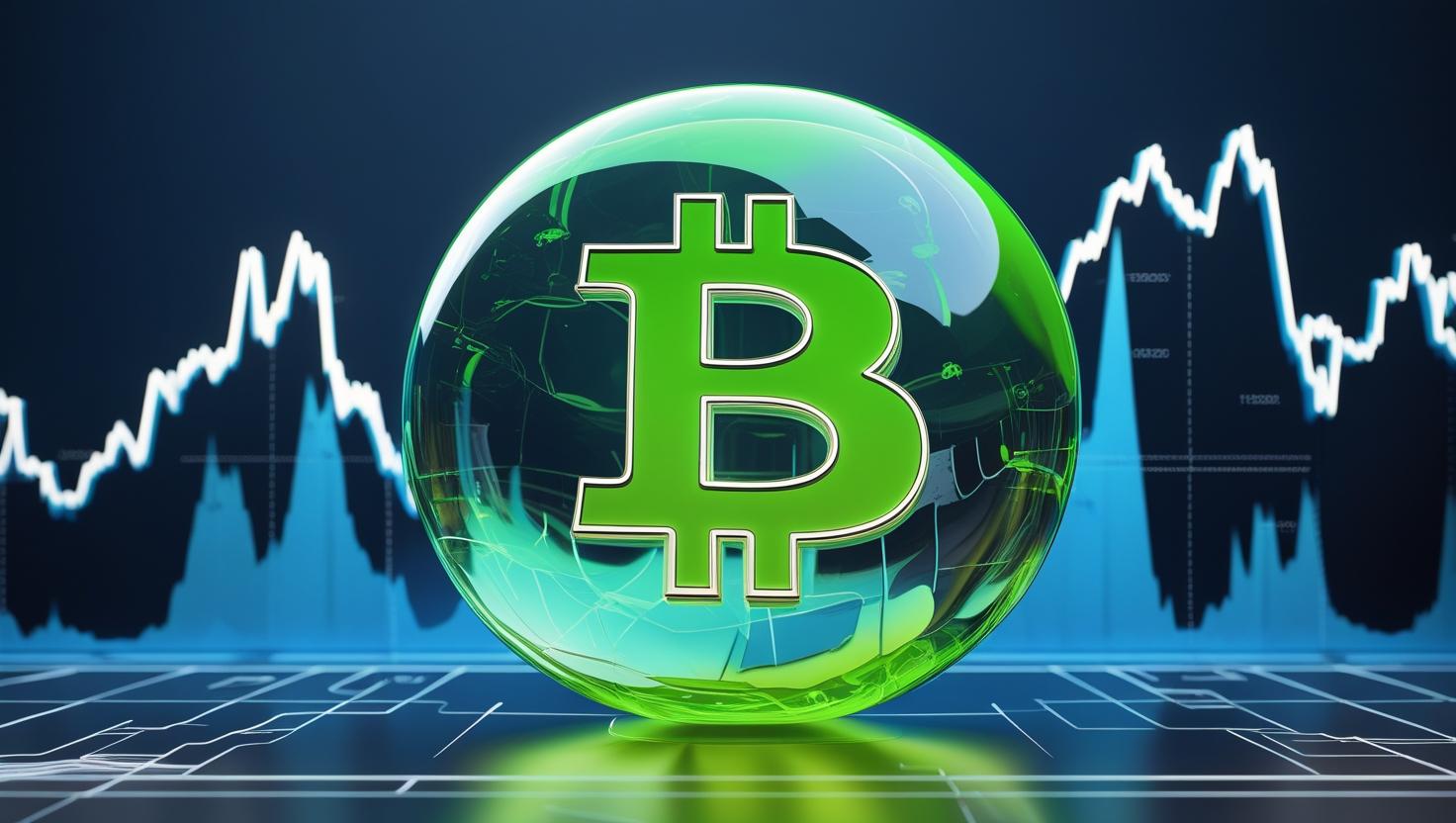
A new innovation, the internet, was the subject of a tidal surge of excitement in the late 1990s. Startups with nebulous business plans but “.com” in their names generated millions of dollars overnight. The prices of stocks increased significantly. And then—**it all crashed**. In 2000, the dotcom bubble exploded, resulting in the dissolution of hundreds of companies and the loss of trillions of dollars in market value.
Two decades have passed, and a new technological revolution is currently underway: **blockchain and cryptocurrency**. Ethereum has generated an entire economy of smart contracts, Bitcoin has evolved from a digital curiosity to a trillion-dollar asset, and Dogecoin has…well, gone to the cosmos.
However, a recurring inquiry arises: **Is the crypto market following the dotcom playbook—from boom to bubble?** as regulatory scrutiny increases, venture funding decreases, and speculative excitement diminishes?
We should investigate the similarities, important distinctions, and whether a “crypto crash” may be the initial phase of its true impact, similar to the internet after 2000.
the boom: innovation meets mania
The crypto wave and the dotcom era share a common trajectory: groundbreaking technology that fuels **inflated expectations**, **speculative investments**, and **exponential excitement**.
**Dotcom Era (1995–2000):**
* By appending “.com” to their name, any individual could raise capital. Valuations frequently lacked a foundation in revenue or profit. Investors were concerned about missing out on “the next Amazon.”
**Crypto Era (2017–2022):**
* Whitepapers and roadmaps were employed by ICOs (Initial Coin Offerings) to raise billions.
* Tokens that were issued without any utility or governance.
* Altcoins experienced an overnight surge in value, and NFT JPEGs were sold for millions.
During both expansions, **speculation** was prioritized over technology, and market psychology surpassed fundamentals.
💥 The Bubble Burst: The Lessons of History
The dotcom bust was immediate and severe:
* By 2002, NASDAQ had experienced a loss of more than 75% of its value. Pets.com, Webvan, and eToys were used as cautionary tales. The majority of internet firms were unsuccessful; however, the survivors (such as Google and Amazon) significantly altered the world.
The crypto market experienced a comparable turnover:
* The 2018 “crypto winter” resulted in the loss of thousands of tokens. A second, more institutional reckoning was initiated by the collapse of Luna, FTX, and Celsius in 2022. The total value of the crypto market decreased from \~\$3 trillion in 2021 to under \$1 trillion in 2023.
However, the internet was not eradicated by the dotcom collapse. It cleared the din, thereby revealing the genuine builders. Cryptocurrency may be on the brink of the same trajectory.
🔄 Parallels That Are Irrefutable
| Dotcom Bubble | Crypto Boom |
|---|---|
| Mass retail speculation | Meme coins and TikTok trading |
| Unclear regulation | SEC vs. Ripple, Binance, Coinbase |
| Tech promise, no product | ICOs with vaporware |
| Irrational valuations | Dog-themed coins worth billions |
| Collapse leads to clarity | DeFi, NFTs, and infra still growing |
History does not repeat itself; however, it frequently rhymes.
What is different this time?
Cryptocurrency is not an exact replica of dotcom frenzy, despite the similarities. There are significant distinctions:
1. **Roots in Money**
* Money was not contested by the internet. This is the case with cryptocurrency. The objective of Bitcoin, Ethereum, and stablecoins is to **restructure the financial system itself**, rather than merely commerce or media.
2. **Unrestricted Participation**
* Corporations dominated infrastructure in Web1 and Web2. In the cryptocurrency industry, it is possible for anyone to construct, trade, or initiate a project without obtaining permission.
3. **The financial infrastructure is operational**
* Billions in DeFi are currently being deployed. Stablecoins resolve a greater volume of daily transactions than PayPal. Ethereum’s gas fees, although they have been subject to criticism, demonstrate genuine economic activity.
This is more than mere marketing rhetoric; there is a solid foundation emerging beneath the surface.
🔮 What to Expect If History Repeats Itself
If the trajectory of crypto is similar to that of dotcom, the subsequent five years could resemble the following:
1. **Continuous regulation and consolidation**:
* Scams and low-value ventures dissipate. Tax regulations, security classifications, and CBDCs are formalized by governments.
2. **The era of infrastructure commences**:
* The mainstream integration of blockchain technology into supply chains and financing. Real-world assets (RWAs) that are tokenized are gaining popularity.
3. **The emergence of next-generation platforms**:
* In the same way that Google, Amazon, and Facebook emerged post-crash, new leaders in identity, gaming, and DeFi could emerge from the current turmoil.
4. **The adoption of user-centric solutions increases**:
* The accessibility of Web3 to billions is facilitated by enhanced wallets, user interfaces, and privacy tools.
🧠 Concluding Thought: The Reset, Not the End
So, will the crypto industry emulate the dotcom model? Most likely.
**The cycle encompasses a growth, a bubble, and a burst.** But if history is any indication, that is not the conclusion; rather, it marks the commencement of a more resilient, streamlined, and enduring entity.
The subsequent phase of cryptocurrency will not be founded on memes or hysteria, but rather on trust, usability, and utility. This reset has the potential to establish the groundwork for a **truly decentralized digital economy**, much like the dotcom bust paved the way for the contemporary internet.
**In your opinion, are we currently in the midst of a bubble collapse, or are we merely paving the way for Web3 to flourish? Please express your opinions in the comments section below. **
Leave a Reply